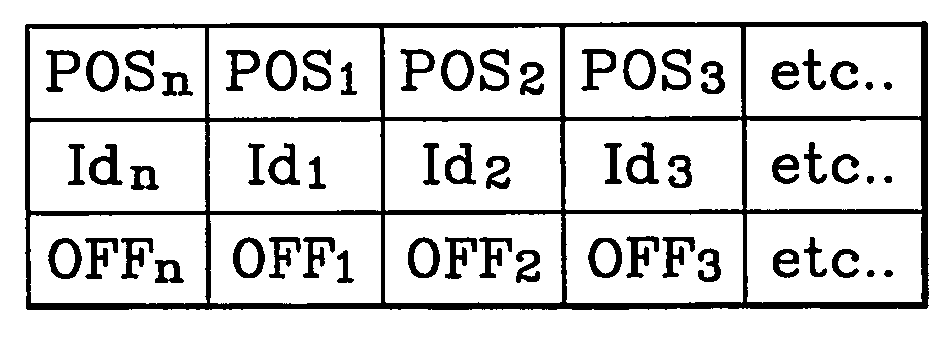Data organization in a smart card
- Summary
- Abstract
- Description
- Claims
- Application Information
AI Technical Summary
Benefits of technology
Problems solved by technology
Method used
Image
Examples
1st example of embodiment
1st Example of Embodiment
[0156] In the service tree such as previously described referring to FIG. 2, the tree leaves, i.e. the nodes located at the end of the tree are proactive commands. Different from the nodes located at an intermediate level between the root and a leave, the execution of a proactive command is a command sent to the MOB cell phone.
[0157] These commands comprise octets series of different classes. In our implementation example, we shall consider three classes of octets series. FIG. 9 shows schematically the various octets classes for a command Cn.
The Three Octets Classes are as Follows:
[0158] 1—A first octets class T1 identical for a type of command; these octets are therefore in the memory as many times as there are commands of this type in the memory. [0159] 2—A second octets class T2 specific to the command for its execution and which a priori is different for each command. It may happen that octet strings are often repeated from one command to another (bu...
2nd example of embodiment
2nd Example of Embodiment
[0172] A second example of realisation illustrating this second solution is as follows. This second example illustrates the factorisation mechanism at the very centre of a command.
[0173]FIG. 10 shows a memory block of the CEA memory used to store a service. In this example, to simplify the description, the command indices and the corresponding commands have been represented in the same data block. Of course, the command indices and the commands could have been stored according to the breakdown described in reference to FIG. 6A or 7B, i.e. the indices in a zone Z2 and the commands in a zone Z3.
[0174] This service includes several commands (C1-C11) stored one after the other preferably without spaces between them in order to optimise the memory occupation. In our example of realisation, a field CH1 including all the command indices occupies the first bytes of this memory block.
[0175] Each command Cn has its own index and uses a decoding rule specific to the...
PUM
 Login to View More
Login to View More Abstract
Description
Claims
Application Information
 Login to View More
Login to View More - R&D
- Intellectual Property
- Life Sciences
- Materials
- Tech Scout
- Unparalleled Data Quality
- Higher Quality Content
- 60% Fewer Hallucinations
Browse by: Latest US Patents, China's latest patents, Technical Efficacy Thesaurus, Application Domain, Technology Topic, Popular Technical Reports.
© 2025 PatSnap. All rights reserved.Legal|Privacy policy|Modern Slavery Act Transparency Statement|Sitemap|About US| Contact US: help@patsnap.com



